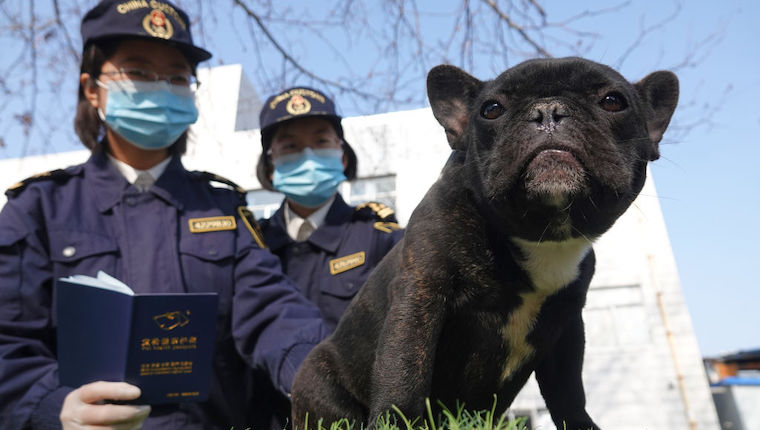
Internal CDC documents reveal that United State’s dog import ban isn’t due to an increase in actual rabies diagnoses.
China Rescue Dogs obtained the documents through the Freedom of Information Act and released a statement detailing the findings.
The Real Reason for the Dog Import Ban
The organization found that actual rabies diagnoses of foreign dogs are few and far between. Rather, the real reason for the ban was due to an increase in falsified ages. These dogs were “under three months of age and therefore not yet fully vaccinated for rabies.”
The CDC states that the ban is necessary. This is because they “identified a significant increase compared with the previous two years in the number of imported dogs that were denied entry into the United States from high-risk countries.”
According to the CDC documents, in 2020, 458 out of the approximately one million dogs entering the United States were denied entry due to invalid, incomplete, or falsified paperwork. In 2019, 298 dogs were denied entry for the same reasons. This makes the increase from 2019 to 2020 a mere 160 additional dogs.
While China Rescue Dogs acknowledges an increase in the number of dogs denied, there was no increase in the number of actual rabies cases.
Jill Stewart with China Rescue Dogs states, “These internal documents reveal that the CDC dog suspension was absolutely an overreaction — in part due to the increase in the number of puppies from Russia, Ukraine, and Colombia. So, the CDC made the blanket decision to completely stop all imports of dogs from 113 countries, rather than focusing on the offending countries.”
Brandy Cherven, also with China Rescue Dogs, said, “Rescue dogs all over the world no longer have hope… All we want to do is save dogs from the slaughterhouses and meat trade in China so that they can live happy lives with their forever families here in the U.S. But our country apparently no longer cares.”
Canada’s Similar Ban
Canada’s similar ban has sparked fierce opposition from some animal rescuers and advocates. In July 2021, Ontario authorities confirmed two cases of rabies in dogs imported from Iran — one of the banned countries. Both dogs had received rabies vaccines not licensed in Canada before their arrival. No active cases of dog rabies currently exist in Canada.
Camille Labchuk, executive director of Animal Justice Canada, said the CFIA should have explored less stringent measures before imposing an all-out ban.
“They’ve gone from zero to 100 very quickly,” she told Global News. Labchuk said Canada should have considered making similar exceptions as part of its policy. She suggested protocols such as additional vaccine verification, antibody tests, and mandatory quarantines.









